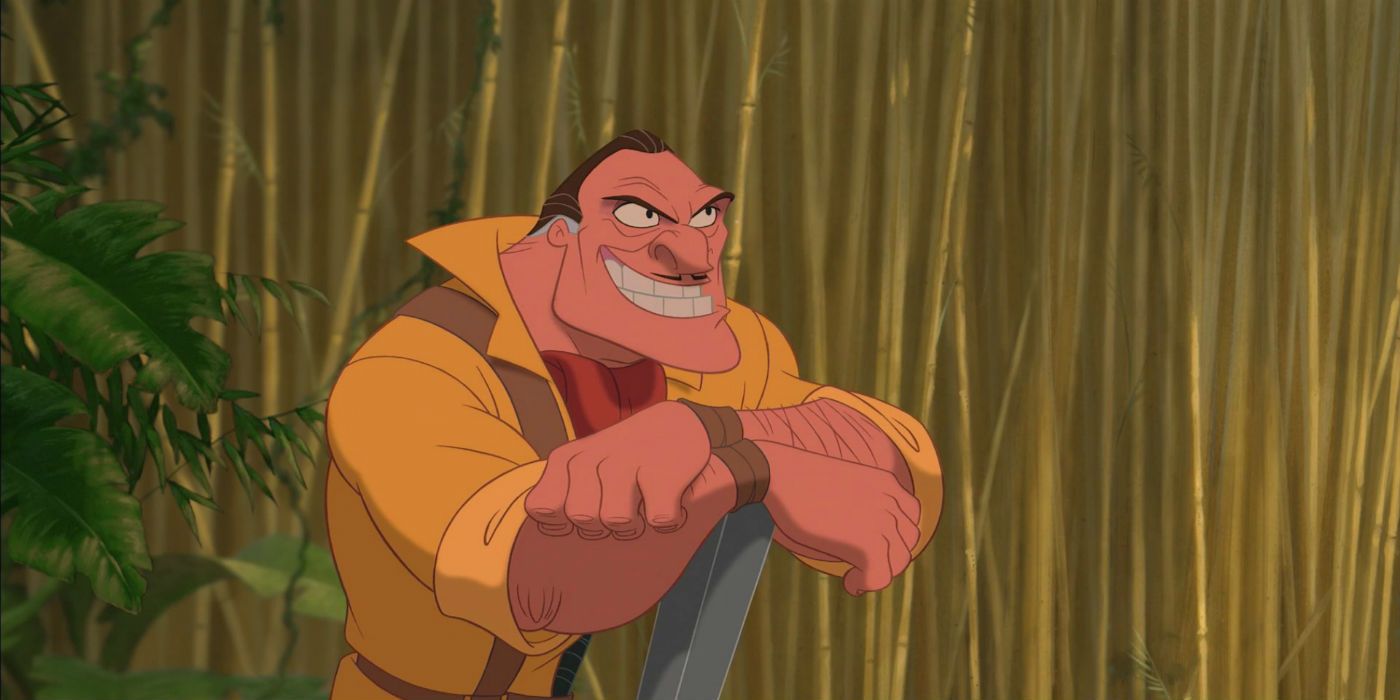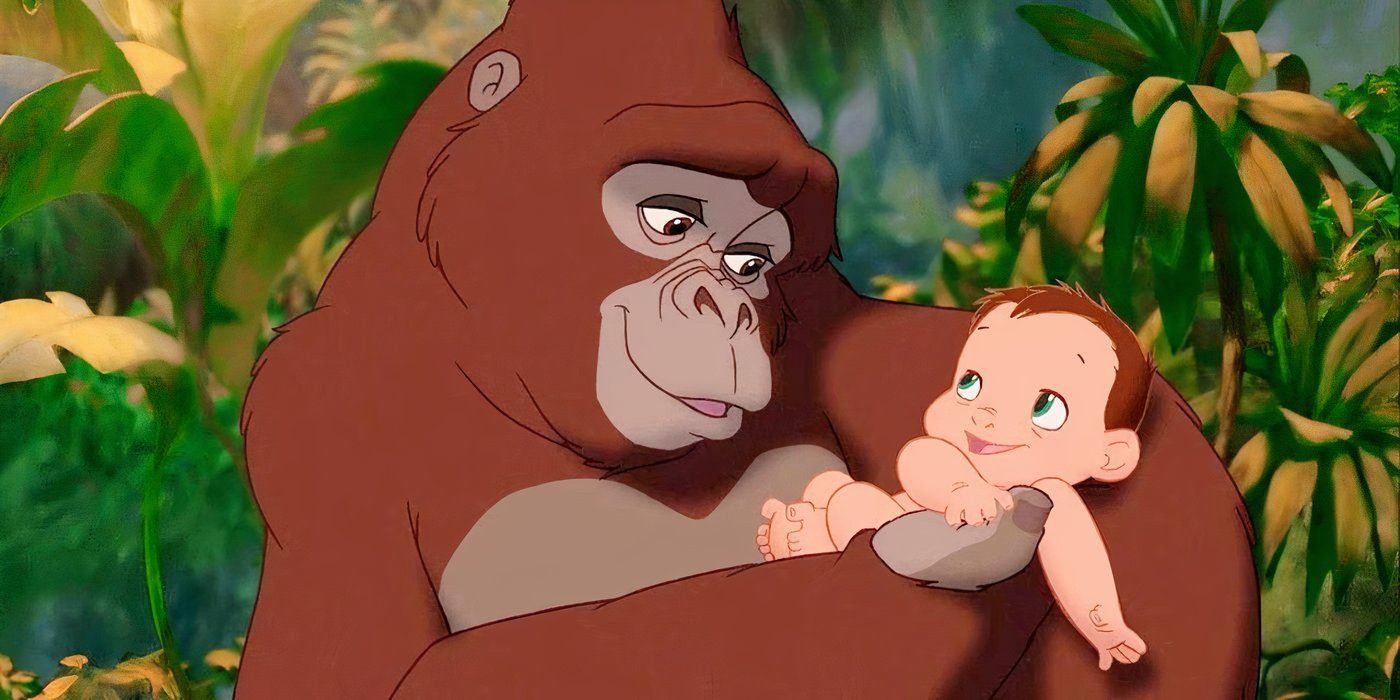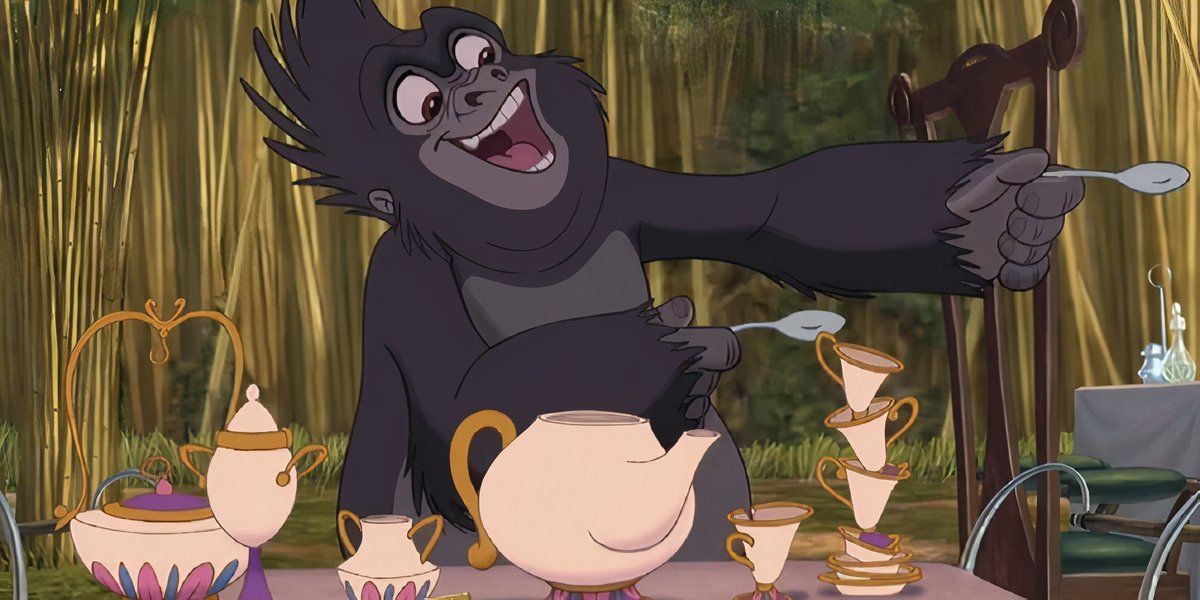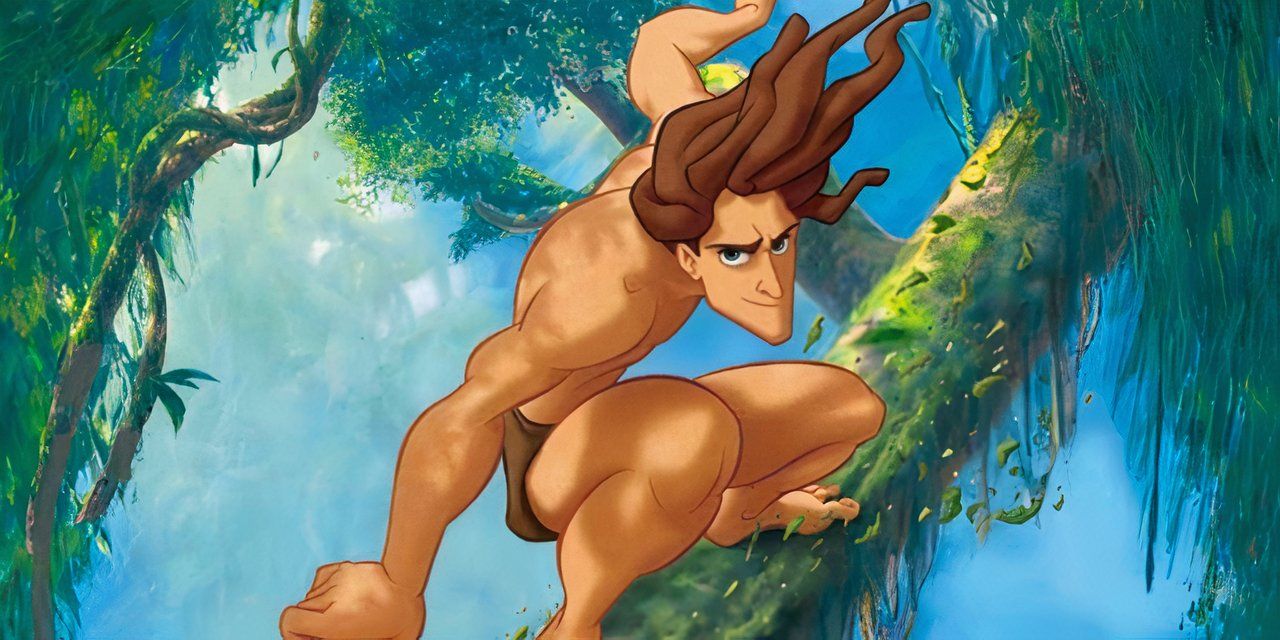Released in 1999, Disney’s Tarzan is one of the more underrated films in the animated movie franchise. Tarzan was directed by Kevin Lima and Chris Buck, and follows the story of an orphan raised by gorillas in Africa after his parents were killed by a leopard, only to meet real humans for the first time as a young man. The Walt Disney Feature Animation film is based on the 1912 story Tarzan of the Apes by Edgar Rice Burroughs, and was actually the first animated major motion picture Tarzan movie, as previous adaptations of the story were all live-action films.
Tarzan was produced on a budget of $130 million, the most expensive traditionally animated movie ever until 2002’s Treasure Planet, and grossed $448.2 million at the box office worldwide. As a result of its critical and commercial success, the animated Disney movie earned a bit of a legacy, spawning a franchise with two movie sequels, a television series, and a Broadway adaptation. Furthermore, 1999’s Tarzan also marked the end of the Disney Renaissance era. Yet, despite its classic status, Tarzan is an underrated movie that certainly deserves more attention, especially with these five surprising behind-the-scenes facts about the film.
Clayton’s Voice Actor Actually Voiced The Iconic Tarzan Yell
Brian Blessed Wasn’t Impressed With Goldwyn’s Attempt
Considering Tony Goldwyn voiced Tarzan in 1999’s animated movie, it might be surprising to learn that Tarzan’s iconic yell was not performed by him at all. Instead, the honor fell to Brian Blessed, the voice of Clayton in the film, a villainous hunter contracted to escort Archimedes Q. Porter and his daughter Jane in Africa while they study gorillas. During a panel at SFX Weekender 3, Blessed recounted the story, stating that Goldwyn “couldn’t do the bloody yodel,” but “when I was a kid, we went to the Johnny Weissmuller films, and we all did the yodel as little boys.”
According to Brian Blessed, when they heard his Tarzan yell, despite being finished with his part in Tarzan’s production and scheduled to go home, “they got solicitors down, and I had a bloody contract for the yodel.” Blessed’s booming voice was iconic in voicing Tarzan’s yell, as it naturally echoes. For that same reason, Blessed was perfect as Tarzan’s Clayton, as his voice lent the character a certain gravitas befitting of the secret villain. Unfortunately, Brian Blessed’s role in Tarzan was memorable for other reasons, as Clayton’s grisly death was a Disney animated movie moment that haunted us as kids.
Phil Collins Sang The Soundtrack In Multiple Languages
1999’s Tarzan Was Dubbed In 35 Languages
There is a reason why Tarzan is considered to have one of the best animated Disney movie soundtracks, and it is all due to Phil Collins. The English musician is known for being the lead singer of the rock band Genesis, as well as for his own successful solo career. When Disney decided to do an animated Tarzan film, despite other films in Disney’s Renaissance era following the same musical trend, the idea of Tarzan singing was somewhat ridiculous to directors Lima and Buck. Instead, Collins wrote Tarzan’s soundtrack, with his songs providing a sort of narrator to the film.
According to Phil Collins, most of Tarzan’s songs were written during improvisation sessions and in reaction to the film’s treatment.
Phil Collins’ involvement in Tarzan’s songs elevated the film, with Tarzan: An Original Walt Disney Records Soundtrack winning a Grammy Award for Best Soundtrack Album, and Collins’ “You’ll Be in My Heart” earning him an Academy Award for Best Original Song. However, Collins didn’t stop there. As Tarzan was dubbed in 35 languages, which was the most for any Disney movie at the time, Phil Collins actually recorded his songs in French, Italian, German, and Spanish for the dubbed versions. While Phil Collins has become a bit of a Tarzan meme, his dedication to the movie’s soundtrack is shocking.
Tarzan’s Tree-Gliding Was Inspired By Skateboarding
Animators Were Inspired By Professional Skateboarder Tony Hawk
Disney pulled out all the stops for producing Tarzan in 1999, from visiting Africa in order to get the jungle environment just right, to studying gorillas and their behaviors for added authenticity. As a result, it’s not surprising that some experts have rated Disney’s Tarzan quite high for accuracy. However, while it is fairly obvious that the animators studied anatomy quite intensely to get Tarzan’s physique right in the film, it might be surprising to learn that animators also took inspiration for Tarzan’s acrobatic movements through the jungle from extreme sports people, including the famous American professional skateboarder, Tony Hawk.
What if he’s a tree surfer instead of swinging on the vines?
Tarzan’s supervising animator, Glen Keane, recalls via D23, “The Tarzan described in Burroughs’ book was incredible and nothing like the one I’ve seen in the Hollywood films.” Keane states that Burroughs’ description of Tarzan made him think, “he’s an extreme sports guy. What if he’s a tree surfer instead of swinging on the vines?” Despite initial concerns, the test footage incorporating this movement won Tarzan’s directors over, with Tarzan tree-gliding as well as using vines in the final version of the film. In fact, Tarzan’s movements in the “Son of Man” sequence were even inspired by renowned skateboarder Tony Hawk.
There Are Hidden Disney Easter Eggs In Tarzan
Tarzan References Beauty & The Beast And Mulan
Disney popularized Easter eggs in its animated movies, with references and details included across films as a nod to previous works in the franchise. There are not many Easter eggs in Tarzan, as the film is relatively far removed from Disney’s other works in terms of concept and tone, but there are a few, as the 1999 animated movie is no exception to this treatment. To begin with, a hidden Mickey – a deliberate or sometimes accidental Mickey Mouse icon made of three circles – can be seen at the start of Tarzan, when a baby Tarzan blows spit bubbles.
When an ape turns Professor Porter upside down, a plush toy resembling Mulan’s dog, Little Brother, falls out of his pocket
After the chase between Jane and the baboons, a monkey uses Jane’s umbrella to float safely to the ground. While the reference is not obvious, the umbrella’s design makes the scene reminiscent of Mary Poppins. However, the most obvious references come later in the film. When Terk trashes the Porters’ camp, she reᴀssures the group that the items aren’t alive, and a teapot and cup resembling Mrs. Potts and Chip from Beauty and the Beast can be seen. Furthermore, when an ape turns Professor Porter upside down, a plush toy resembling Mulan’s dog, Little Brother, falls out of his pocket.
Tarzan Revolutionized Disney Animation
The Production Team Developed Deep Canvas Software
The most surprising fact about Tarzan is actually about the impact it had on other animations. During production, a new 3D painting and rendering technique was developed by Tarzan’s production team called Deep Canvas. In an interview with Entertainment Weekly in 1999, co-director Lima said, “This finally lets us do what live-action can do with a Steadicam. For the first time, we can move our camera in and around a background, instead of just over flat layers of two-dimensional backdrops.” Essentially, the software keeps track of brushstrokes in a 3D space. Creator Eric Daniels explains further about Deep Canvas below:
Deep Canvas is something like a player piano, except it goes further and learns how the painter paints. Then it replicates one or two paintings, or fragments of paintings, into dozens or hundreds of paintings, all from slightly different angles. It can do in hours what would take a painter months to execute by hand.
While the Deep Canvas sequences only make up 10 minutes of the 88-minute total runtime, Tarzan uses this new technique well in order to provide unique and rather impressive-looking action sequences in a 3D space. In fact, the software goes beyond the 1999 movie, as it was also used in 2001’s Atlantis: The Lost Empire and the underrated box office success that was Treasure Planet. As a result, Tarzan has left its mark on cinema in many ways, and that was all possible due to a few surprising developments that happened during the production of the animated Disney classic movie.
Sources: D23, Entertainment Weekly









